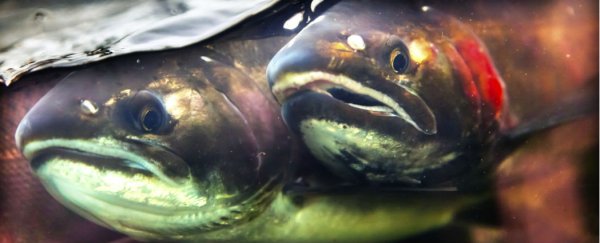As crucial components of everything from smartphones and television screens to wind turbines, solar panels, and electric cars, rare earth elements such as neodymium and dysprosium are becoming increasingly in demand by the world's most massive manufacturing companies. And while they're being used to support the burgeoning renewable energy industry, the way we extract them and refine them is anything but environmentally friendly.
China is by far the biggest producer of rare earth elements. According to researchers at the Massachusetts Institute of Technology (MIT) in the US, their refining processes leave behind huge amounts of liquid and solid waste. To refine one tonne of rare earth elements, they need to produce around 75 cubic metres of acidic waste water and one tonne of radioactive waste residue. "Production yields very large amounts of waste - 1.2 billion to 1.6 billion cubic metres of waste gases per year, and 9.8 million cubic meters of acidic waste water," says the MIT terrascope group.
Not only that, but the range of metals contained by rare earth element ores, including aluminium, arsenic, barium, beryllium, cadmium, cobalt, copper, lead, manganese, and zinc, are separated from the ores during both the refining and extracting processes, and turn up in the surrounding air, water, and soil. The ability to contaminate all three environmental mediums is of great concern, says the MIT research group, because these metals are almost impossible to destroy, and will remain and accumulate for years to come, threatening the heath of local ecosystems.
We need a better way of producing rare earth elements, because let's face it, we don't have anything to replace them with. So a team of Japanese researchers led by Yoshio Takahashi of Hiroshima University tried to find a more environmentally friendly solution, and stumbled onto quite possibly the last thing you'd expect - salmon sperm, or 'milt'.
The team discovered that a number of rare earth elements formed tight bonds with special molecules found on the surface of bacterial cells. These cells contain phosphate, so the team thought, you know what else contains a whole bunch of phosphate? DNA contained by sperm, and the Japanese fishing industry is producing thousands of tonnes of salmon sperm every year as waste, so… maybe?
Douglas Main explains the discovery at Newsweek:
"They found that the metals contained in neodymium magnets (including neodymium, dysprosium and trivalent iron) and several other rare earth elements bound strongly to DNA within dried and powdered salmon sperm. The metals were then recovered by adding acid to the solution and separating the various substances using a centrifuge, according to the PLOS ONE study, where the team described their work."
Of course, there are some limitations to the idea, according to rare earth element expert, Jean-Claude Bünzli, from the Swiss Federal Institute of Technology. "The idea of relying on cheap salmon milt to absorb and separate rare earth elements from iron in scrap magnets is quite interesting and, although the proposed protocol does not suppress dissolving the magnets in strong acid, it deserves attention," he told James Urquhart at Chemistry World.
Figuring out how to scale the process way up to where it needs to be to feasibly tackle China's rare earth element problem is going to be the next big step, Bünzli added, but said he could see the salmon sperm process proving useful in the removal of rare earth elements contained by discarded electronic circuits, mobile phones and hard disk drives, so they can be reused.
Sources: Newsweek, MIT's terrascope website, Chemistry World
